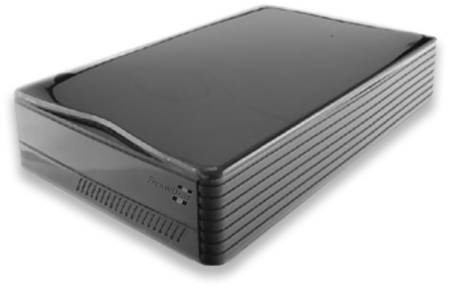Housekeeping: Back Home on the Mac
| The last piece of the preproduction puzzle we'll examine before playing with iDVD in Chapter 3, "Introduction to Making DVDs," is checking your Mac to make sure it's up to the task before you get started. Not just any Mac is ready to perform feats like authoring multimedia. Here are some things to consider. Disk spaceYou need a massive quantity of disk space available when you work with digital video. DV requires around 3.6 MB of storage space per second. So each minute of DV footage uses 220 MB, 10 minutes uses 2.2 GB, and 100 minutes uses more than 22 GB. But when you take into account all the interim versions, render files, and unused footage, you need three or four times as much storage as the final edited and encoded project will use. If you don't have enough storage for the project, it's better to add more now than to bring the project to a crashing halt because there's no more disk space available.
The rest of your MacTo run iDVD 3, you need a SuperDrive equipped iMac, Power Mac G4, or PowerBook G4, running Mac OS X v 10.1.5 or later (v 10.2.2 or later recommended) and a minimum of 256 MB of RAM, plus approximately 1.5 gigabytes of hard disk space for iDVD itself. I recommend at least 512 MB of RAM for multimedia authoring, especially if you want to use iMovie or another video editing program and iDVD at the same time. It can be done and works beautifully, but not on a Mac with a mere 256 MB of RAM. Mac OS X loves RAM without enough RAM, performance will suffer. While virtual memory in OS X is an order of magnitude better than in OS 9, it's still not desirable when you're in a hurry. More RAM equals more performance. And who doesn't like that? If you haven't used them lately, or haven't used them at all, it wouldn't hurt to make sure the software tools you need iDVD and iMovie, at the very least are installed and working properly. Save a finished movie or two in iMovie for use with iDVD. Burn a disc or two to make sure they work (be sure to review them on your set-top DVD player, and not just on your Mac).
Backup planAll this 220 MB of disk space per minute of digital video is valuable stuff. You don't want to have to shoot it all again, do you? That's why you need to think about how and how often you're going to back up your project even if the plan ends up being "I don't care about it enough to bother." Those $3 DVD-Rs, if you didn't know, can be used to store 4.7 GB of data files in lieu of video. So using the previous formula, a $3 disc can hold more than 20 minutes of high-quality video. And you can also use re-recordable DVD-RW discs for backup, though you can't use them with iDVD without a bit of sneakiness. Give it some thought if any of your footage is worth protecting.
R.T.F.M. (Read the fine manuals)Last but not least, before you begin the project, read the manual. Which one? Every one. With the exception of iDVD, this book isn't going to show you how to use anything not iMovie or your camcorder or the new FireWire drive you just bought. So read their manuals before beginning your project, not in the middle when you're feeling pressured. Whenever I hear someone say, "Mac users don't need to read manuals," I always correct them. Much of the power and elegance of today's Macintosh software is concealed, and if you don't read the documentation, you will no doubt miss out on powerful features that aren't in the menus. Even with simple programs like iDVD and iMovie. Since neither iMovie nor iDVD comes with a printed manual, check out their tutorials and help systems. A camcorder may work fine in its fully automatic mode, but it could work much better using manual settings appropriately. You'll never know if you don't read the manual. The better you know your tools, the better results you'll get. So just knuckle down and do it. Read the manuals and get to know your tools before you begin a project with any sort of deadline. |
